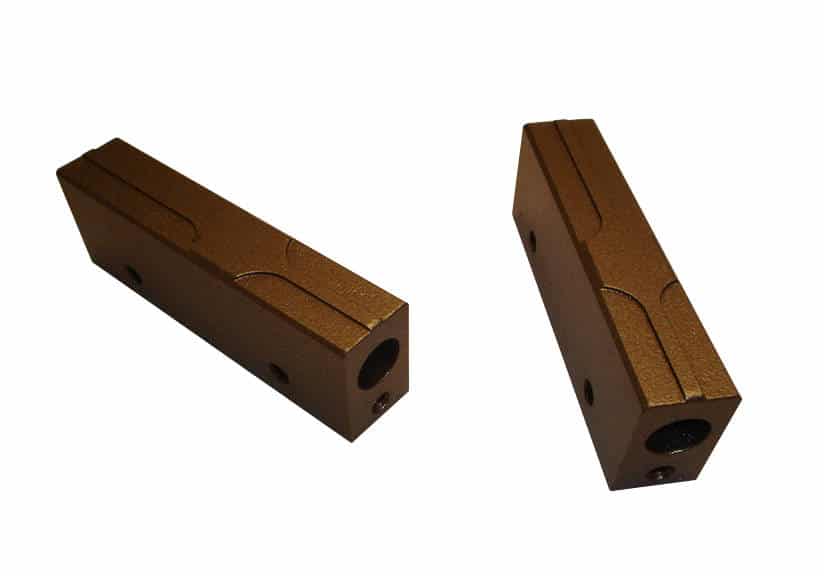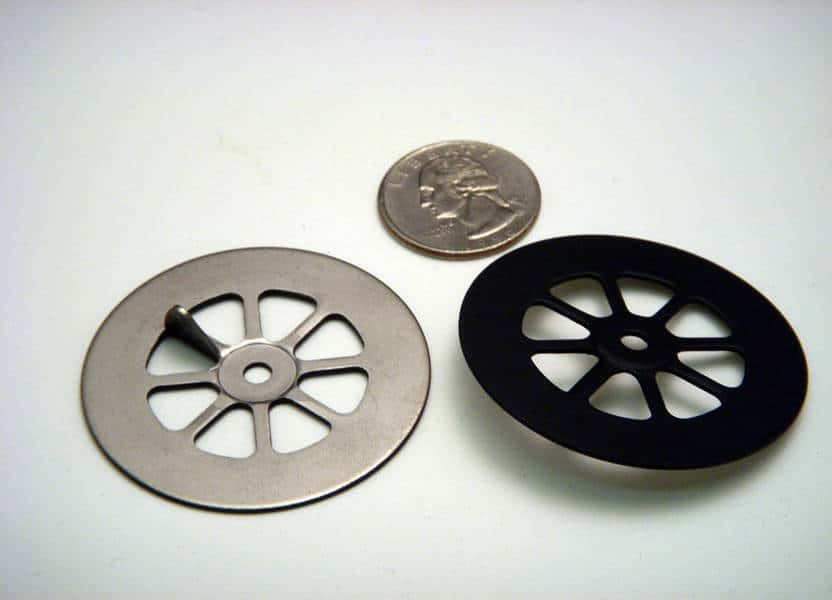Teflon™ PTFE & Non-Stick Coatings
Industrial Teflon™ Coating Services & Specifications
Orion is one of the largest, highest volume, automated Licensed Industrial Applicators (LIA) of Teflon™ coatings. Teflon™ non-stick industrial coatings are available in both liquid and powder. The versatility of Teflon™ coatings allow almost unlimited application to a wide variety of parts sizes and configurations, always adding value far beyond the inherent nonstick qualities. Versatility unmatched by any other engineered material. Industrial Teflon™ coatings spray on like paint and bake to a tough, inert finish.
Over the years, technology has extended the family of non-stick coatings to ensure a finish with the ideal combination of properties to meet most design needs. In 2015 the United States accounted for 15.5% of the world consumption of PTFE coatings, and US consumption of PTFE coatings has continued to grow since then.
By combining heat resistance with almost total chemical inertness, excellent dielectric stability and a low coefficient of friction, non-stick industrial coatings offer a balance of properties unbeatable by any other material. With an industrial Teflon™ coating, the coefficient of friction is generally lowered to a range of 0.02 to 0.15, depending on the load, sliding speed, and type of coating used.
Dry lubricant coatings are special versions of Chemours technology designed to provide lubrication under high-pressure/velocity (PV) conditions. These products are solvent-based, one-coat systems that are usually cured between 148°C/300°F and 371°C/700°F.
Teflon™ coating services can be applied to carbon steel, aluminum, stainless steel, steel alloys, brass and magnesium as well as non-metals such as glass, fiberglass, some rubber and plastics. Optimum adhesion is obtained by roughening the surface before applying the industrial coating.
Other well-known non-stick coating brands include:
Teflon™ is a registered trademark of Chemours. Orion Industries, Ltd is a Licensed Industrial Applicator of Teflon™.
Industrial PTFE Non-Stick Coating Services & Specifications
By combining heat resistance with almost total chemical inertness, excellent dielectric stability and a low coefficient of friction, non-stick industrial coatings offer a balance of properties unbeatable by any other material. With an industrial Teflon™ coating, the coefficient of friction is generally lowered to a range of 0.02 to 0.15, depending on the load, sliding speed, and type of coating used.
Dry lubricant coatings are special versions of Dupont Teflon™-S technology designed to provide lubrication under high-pressure/velocity (PV) conditions. These products are solvent-based, one-coat systems that are usually cured between 148°C/300°F and 371°C/700°F.
Teflon™ coating services can be applied to carbon steel, aluminum, stainless steel, steel alloys, brass and magnesium as well as non-metallics such as glass, fiberglass, some rubber and plastics. Optimum adhesion is obtained by roughening the surface before applying the industrial coating.
What is PTFE?
Polytetrafluoroethylene (PTFE) is a synthetic fluoropolymer of tetrafluoroethylene that has numerous applications. The well-known brand name of PTFE-based formulas is Teflon™ by Chemours. Chemours was a spin-off from DuPont, which originally discovered the compound in 1938.
PTFE is a fluorocarbon solid, as it is a high molecular weight compound consisting wholly of carbon and fluorine. PTFE is hydrophobic: neither water nor water-containing substances wet PTFE. PTFE has one of the lowest coefficients of friction of any solid.
PTFE is used as a non-stick coating for pans and other cookware. It is nonreactive, partly because of the strength of carbon–fluorine bonds, and so it is often used in containers and pipework for reactive and corrosive chemicals. Where used as a lubricant, PTFE reduces friction, wear, and energy consumption of machinery.
PTFE was accidentally discovered in 1938 by Roy J. Plunkett while he was working in New Jersey for DuPont. As Plunkett attempted to make a new chlorofluorocarbon refrigerant, the tetrafluoroethylene gas in its pressure bottle stopped flowing before the bottle's weight had dropped to the point signaling "empty."
Since Plunkett was measuring the amount of gas used by weighing the bottle, he became curious as to the source of the weight, and finally resorted to sawing the bottle apart. He found the bottle's interior coated with a waxy white material that was oddly slippery. Analysis showed that it was polymerized perfluoroethylene, with the iron from the inside of the container having acted as a catalyst at high pressure. DuPont patented the new fluorinated plastic in 1941, and registered the Teflon™ trademark in 1945.
FAQ About PTFE Coatings
What forms are available for PTFE Non-stick coatings?
Teflon™ non-stick industrial coatings are available in both liquid and powder.
How can you use PTFE Non-stick coating?
The versatility of PTFE coatings allow almost unlimited application to a wide variety of parts sizes and configurations, always adding value far beyond the inherent nonstick qualities. Versatility unmatched by any other engineered material.
How do you use PTFE coatings? Can it spray on?
Industrial Teflon™ coatings spray on like paint and bake to a tough, inert finish. Over the years, technology has extended the family of non-stick coatings to ensure a finish with the ideal combination of properties to meet most design needs.
How in demand are PTFE Non-stick coatings in the US?
In 2015 the United States accounted for 15.5% of the world consumption of PTFE coatings.
How much has U.S. consumption of PTFE coatings grown?
From 2015 to 2020, U.S. consumption of PTFE coatings grew about 2.0% per year.


